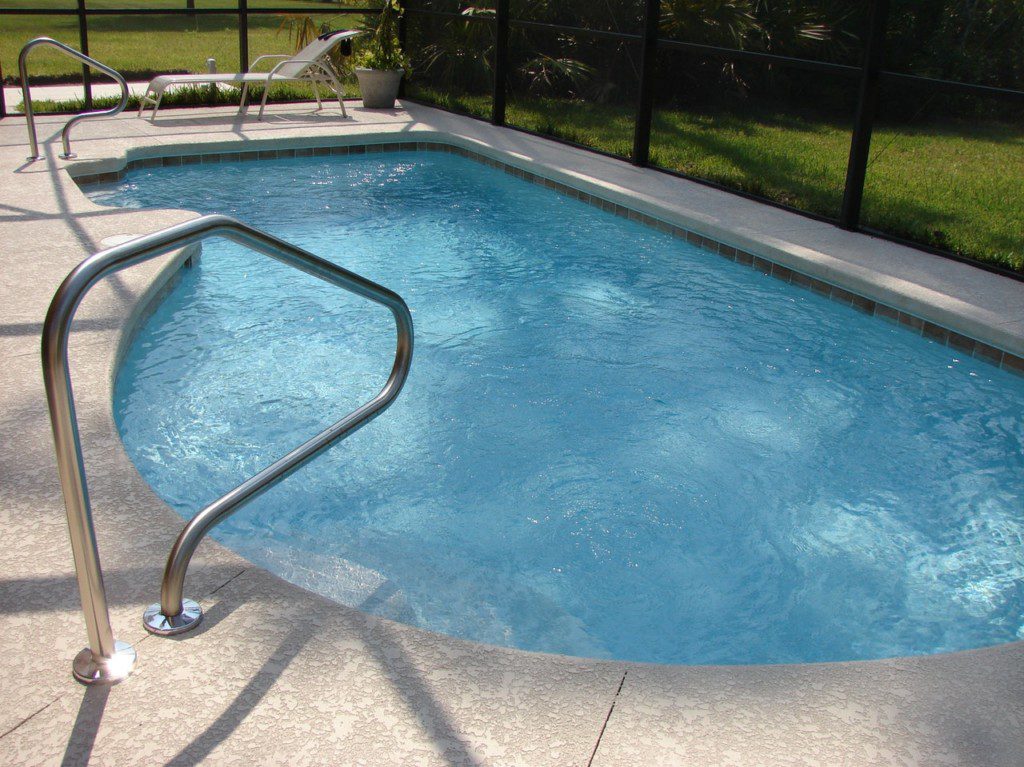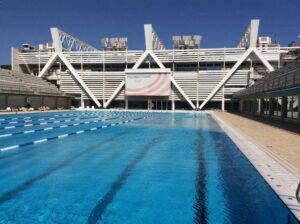11/06/2023 | Aquaculture | 9 MINUTE READ
Legionella Bacteria: Catalase Positive Characteristics and the Role of pH Sensors

Legionella pneumophila, commonly called Legionella, is a Gram-negative bacterium responsible for causing Legionnaires’ disease, a severe form of pneumonia. Since its discovery in 1976 during an American Legion convention, Legionella has been a significant concern for public health. In this article, we delve into the characteristics of Legionella, focusing on its catalase-positive nature, and explore the critical role that conductivity, pH, and chlorine sensors play in cooling towers to prevent Legionella contamination.
Delving into the World of Legionella: A Comprehensive Overview
Legionella pneumophila, a bacterium that has captured the attention of microbiologists and medical professionals alike, belongs to the Legionella genus. This intriguing organism is characterized by its aerobic nature, allowing it to thrive in environments with oxygen. Its pleomorphic form, capable of assuming various shapes, adds another layer of complexity to its existence. While flagella, hair-like appendages, enable Legionella to navigate its surroundings, the absence of spores renders it incapable of forming dormant structures that could resist harsh conditions.
A defining feature of Legionella pneumophila is its catalase-positive status. This ability to produce the catalase enzyme, a molecular workhorse, grants the bacterium an advantage in its quest for survival. Catalase efficiently breaks down hydrogen peroxide, a toxic byproduct of cellular metabolism, into harmless water and oxygen. This protective mechanism shields Legionella from the damaging effects of oxidative stress, a common threat in its environment.
Catalase: A Cornerstone of Legionella’s Survival and Pathogenesis
The production of catalase by Legionella pneumophila extends beyond mere survival; it plays a crucial role in the bacterium’s pathogenesis, the ability to cause disease. Catalase disrupts the host immune response, allowing Legionella to evade detection and establish infection. By neutralizing hydrogen peroxide, a key component of the immune system’s arsenal, Legionella effectively disarms its enemies and creates a safe haven for its proliferation.
In addition to its direct role in pathogenesis, catalase also contributes to Legionella’s persistence in the environment. By scavenging hydrogen peroxide, a potent antimicrobial agent, catalase helps Legionella resist disinfection efforts and maintain its presence in water systems, the bacterium’s primary reservoir.
Unveiling the Intriguing Nature of Legionella
Legionella pneumophila, with its unique blend of characteristics, stands as a testament to the remarkable diversity and resilience of the microbial world. Its ability to thrive in oxygen-rich environments, its adaptability to different shapes, and its potent catalase-mediated defense mechanisms underscore its remarkable aptitude for survival and pathogenesis. Understanding these intricacies is essential for developing effective strategies to combat Legionella-associated infections and safeguard public health.

Legionella Transmission and Environmental Reservoirs
Legionella, a genus of bacteria notorious for causing Legionnaires’ disease and Pontiac fever, poses a significant public health concern. Its ability to thrive in diverse environmental conditions and spread through aerosolized water droplets necessitates a thorough understanding of its transmission dynamics and ecological niches.
Inhalation of Contaminated Aerosols: The Primary Transmission Route
Legionella’s primary mode of transmission is through the inhalation of aerosolized water droplets containing the bacteria. These microscopic droplets can be generated from various sources, including cooling towers, decorative fountains, whirlpool spas, and showerheads. When inhaled, the droplets can travel deep into the lungs, where they can initiate infection.
Favorable Environmental Conditions: A Haven for Legionella
Legionella exhibits remarkable adaptability, capable of flourishing in a wide range of environmental conditions. It thrives in temperatures ranging from 0 to 63°C, with an optimal growth range of 25 to 40°C. This adaptability allows Legionella to persist in diverse aquatic environments, including natural water bodies and artificial water systems.
The bacterium’s tolerance to varying pH levels further enhances its survival. Legionella can prosper in environments with pH levels ranging from 5.0 to 8.5, demonstrating its ability to withstand both acidic and alkaline conditions. This adaptability is particularly relevant in artificial water systems, where pH fluctuations can occur due to chemical treatments or aging infrastructure.
Artificial Water Systems: A Breeding Ground for Legionella
Artificial water systems, particularly those characterized by warm, stagnant water, serve as prime breeding grounds for Legionella. Cooling towers, large structures that dissipate heat from industrial processes or air conditioning systems, are frequently implicated in outbreaks of Legionnaires’ disease. The warm, humid conditions within cooling towers provide an ideal environment for Legionella to proliferate and form biofilms, complex communities of microorganisms attached to surfaces.
Biofilms provide Legionella with a protective shield, shielding it from disinfectants and antimicrobial agents. Additionally, biofilms can promote horizontal gene transfer, allowing Legionella to acquire new traits that enhance its survival and pathogenicity.
The Role of Cooling Towers in Legionella Contamination
Cooling towers are ubiquitous in modern society, playing a vital role in air conditioning systems and industrial processes. These colossal structures, often resembling giant chimneys, dissipate heat by circulating water through a series of baffles and fans. While cooling towers provide essential services, they can also harbor a dangerous pathogen: Legionella.
Legionella, a genus of bacteria, thrives in warm, moist environments, making cooling towers ideal breeding grounds. The bacterium can multiply rapidly within the tower’s intricate network of pipes, sumps, and basins, forming biofilms that protect it from disinfectants. When aerosolized, these biofilms can be carried by the wind and inhaled by humans, potentially leading to Legionnaires’ disease, a severe respiratory illness.
Factors Contributing to Legionella Growth in Cooling Towers
Several factors contribute to the growth of Legionella in cooling towers:
- Warm Water Temperatures: Legionella thrives in temperatures between 25°C and 45°C (77°F and 113°F), which is within the operating range of most cooling towers.
- Stagnant Water: Stagnant water provides an ideal environment for Legionella to multiply, as it lacks the flow and turbulence that can hinder bacterial growth.
- Biofilm Formation: Legionella forms biofilms on surfaces within cooling towers, creating a protective layer that shields the bacteria from disinfectants and antimicrobial agents.
- Nutrient Availability: Cooling towers often contain nutrients that support Legionella growth, such as organic matter and minerals.
Prevention Strategies to Mitigate Legionella Risk
To mitigate the risk of Legionella contamination in cooling towers, several prevention strategies can be implemented:
- Regular Cleaning and Disinfection: Regularly cleaning and disinfecting cooling towers with appropriate biocides helps to reduce Legionella populations.
- Temperature Control: Maintaining cooling tower water temperatures below 25°C (77°F) can help suppress Legionella growth.
- Proper Water Treatment: Implementing proper water treatment practices, such as maintaining appropriate chlorine levels, can help control Legionella.
- Regular Inspections and Monitoring: Conducting regular inspections and monitoring Legionella levels in cooling towers is crucial for early detection and intervention.
Public Health Implications
Legionella contamination in cooling towers poses a significant public health threat. Aerosolized Legionella droplets can travel long distances, potentially affecting individuals living or working near cooling towers. The elderly, individuals with weakened immune systems, and smokers are particularly susceptible to Legionnaires’ disease.

The Imperative of Monitoring and Prevention
Given the potential for severe health consequences associated with Legionella-contaminated cooling towers, monitoring and prevention are paramount. Legionella outbreaks have been linked to these structures, highlighting the need for proactive measures to safeguard public health. The utilization of sensors has emerged as a critical tool in addressing this challenge.
Conductivity Sensors: Sentinels for Water Quality
Conductivity sensors, as the name suggests, measure the electrical conductivity of water, a property directly related to its ion concentration. In the context of Legionella prevention, conductivity sensors serve as invaluable guardians of water quality in cooling towers. By tracking changes in conductivity, operators can detect abnormalities that may signal the presence of Legionella. Sudden spikes in conductivity, for instance, could indicate the release of biofilms, which harbor Legionella, into the cooling tower water.
pH Sensors: Maintaining the Chemical Equilibrium
pH sensors play a pivotal role in maintaining the delicate chemical equilibrium of cooling tower water. These instruments measure the acidity or alkalinity of a solution, providing crucial information about the pH level. In the context of Legionella prevention, pH sensors are indispensable for ensuring that the pH remains outside the range of 5.0 to 8.5, where Legionella thrives. By maintaining an unfavorable pH environment, pH sensors help discourage Legionella proliferation.
Chlorine Sensors: Guardians of Disinfection Efficacy
Chlorine sensors stand as sentinels of disinfection efficacy in cooling towers. These instruments continuously monitor the concentration of chlorine, a powerful disinfectant that effectively controls Legionella contamination. By providing real-time data on chlorine levels, chlorine sensors empower operators to maintain adequate concentrations to kill and inhibit Legionella growth.
The Convergence of Monitoring and Prevention
The synergistic interplay of conductivity, pH, and chlorine sensors forms a robust monitoring network for Legionella prevention in cooling towers. By continuously tracking these critical parameters, operators can detect early signs of Legionella proliferation and take swift corrective actions to safeguard public health.

Integrated Sensor Systems: A Symphony of Vigilance Against Legionella
While individual sensors provide valuable insights into specific parameters of cooling tower water quality, integrated sensor systems elevate Legionella prevention to a new level of sophistication. These multifaceted systems seamlessly combine conductivity, pH, chlorine, and other sensors to orchestrate a comprehensive monitoring strategy. By simultaneously tracking multiple parameters, integrated sensor systems offer a more robust defense against Legionella contamination, transforming cooling towers into bastions of public health protection.
The Power of Synergy: Sensor Integration for Enhanced Legionella Control
The synergy derived from integrating multiple sensors into a single system far surpasses the capabilities of individual sensors. Conductivity sensors, the sentinels of water quality, detect abnormalities that may indicate the presence of Legionella-harboring biofilms. pH sensors, the guardians of the chemical equilibrium, ensure that the pH remains outside the range favorable for Legionella proliferation. Chlorine sensors, the protectors of disinfection efficacy, maintain adequate chlorine levels to inactivate Legionella. Together, these sensors form a formidable alliance against Legionella, safeguarding public health with unwavering vigilance.
Best Practices for Legionella Prevention: A Roadmap to Success
Implementing sensor-based Legionella prevention strategies requires meticulous planning and adherence to best practices. Regulatory requirements and guidelines vary by location, and it is imperative to stay abreast of these evolving standards. Regular maintenance of sensor systems is paramount to ensure their continued effectiveness in detecting and preventing Legionella contamination. Continuous monitoring of sensor data is crucial for early identification of anomalies and prompt intervention.
Conclusion
Legionella pneumophila, with its catalase-positive characteristics, poses a significant threat to public health when found in cooling towers. Integrating conductivity, pH, and chlorine sensors in cooling tower systems provides a powerful toolset for monitoring and preventing Legionella contamination. By leveraging these sensors and following best practices, we can enhance our ability to safeguard human health and prevent Legionnaires’ disease outbreaks associated with cooling towers. As technology advances, the fight against Legionella continues, and sensor technology remains at the forefront of this battle.
Posted by Joshua Samp on November 6, 2023
Sensorex is a global leader in the design and manufacture of quality sensors for water quality and process applications. The company offers more than 2000 sensor packages for pH, ORP, conductivity, dissolved oxygen, free chlorine, chlorine dioxide, UV transmittance and other specialty measurements, as well as a full line of sensor accessories and transmitters. Its expert technical support engineers solve analytical sensor challenges with custom designs and off the shelf products.




